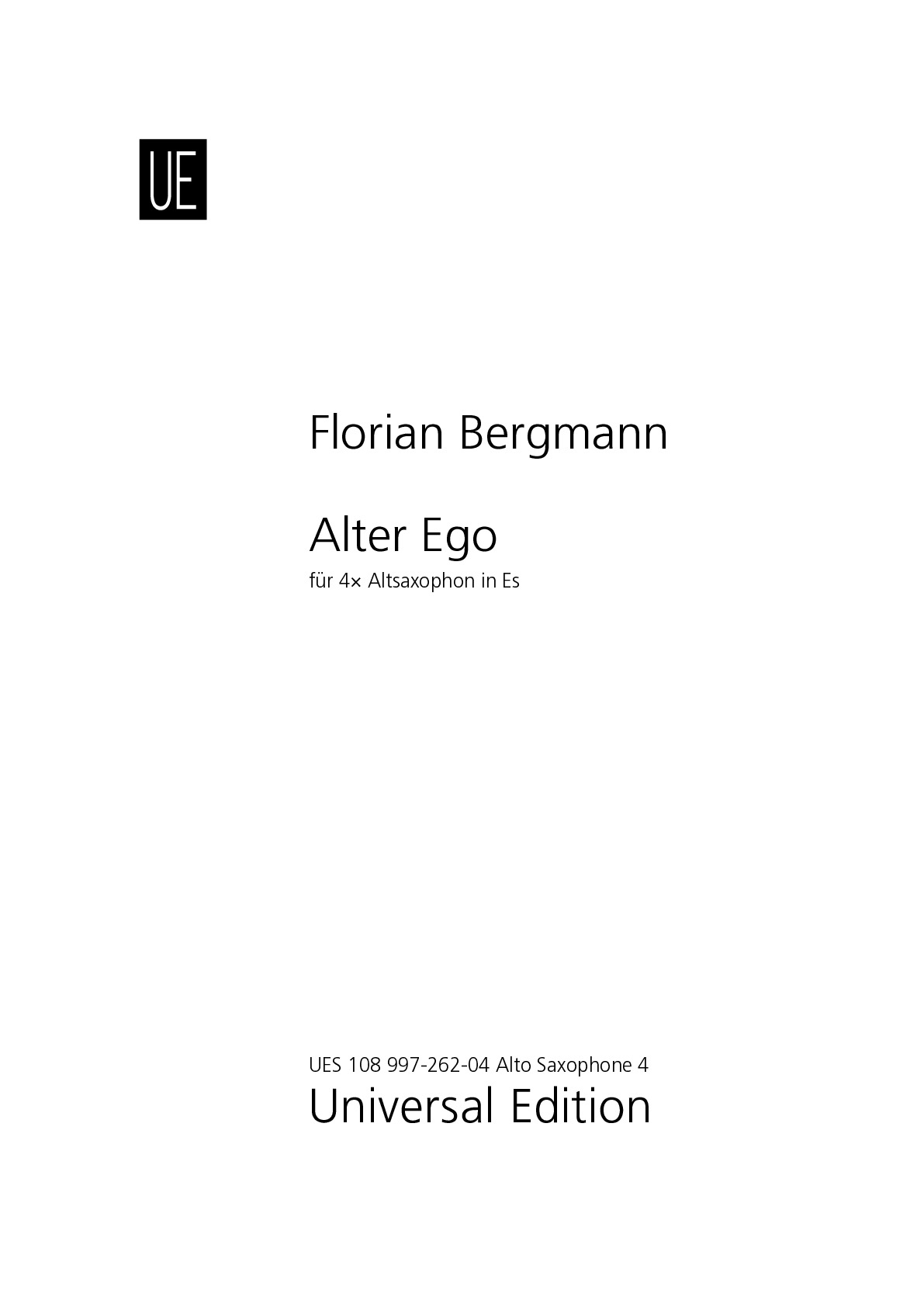.png)
Digital edition
immediately available as PDF
€14.95
Payments:
Shipping:
Florian Bergmann
4. Altsaxophon in Es (Alter Ego)
UES108997-262-04
Type: Stimme
Format: 210 x 297 mm
Pages: 12
Digital edition
immediately available as PDF
€14.95
Payments:
Shipping:
Description
Alter Ego is a piece for alto saxophone quartet and playback. It was written in 2025 for the ensemble Fo[u]r Alto, of which I am a long-standing member as a saxophonist and with which we have developed a very independent ensemble sound over the years, often based on microtonality and extended playing techniques.
In psychology, the term ‘alter ego’ describes a strong identification of the ego with a close counterpart in two ways: On the one hand, as an extremely intense relationship between two people, through which one person becomes a part of the other's own identity to a certain extent; on the other hand, as a second, split-off ego within one and the same psyche.
The composition Alter Ego is permeated in many ways by this idea of (self-)identification and separation.
Firstly, there is the alto saxophone quartet as an extremely homogeneous body of sound, which differs drastically from the classical saxophone quartet line-up in its concentration on just one member of the saxophone family. As marginal as this difference may seem at first, its consequences for the musical structure are great - so great, in fact, that it must be regarded as a different genre of instrumentation.
Within the quartet, the performers face each other as figures of mutual identification. In unison, their sound merges into a single, inseparable tone and in the interrupted melody they reflect and complement each other to form a whole. The spatial disposition of the players in the four corners of the performance space raises the question of whether they are four separate - albeit symbiotically related - individuals or a single organism.
This question is further emphasised by the addition of the playback. Each player is provided with a loudspeaker from which passages previously recorded by the player himself can be heard. The identification relationships are multiplied by the saxophones sounding from the loudspeakers: on the one hand, the original quartet breaks up into four separate individuals, each of which in turn enters into an interplay with its own self-recorded saxophone voices - in other words, literally into an interplay with itself. On the other hand, the quartet joins together even more closely and positions itself opposite its own double (eight-track) loudspeaker mirror image. On a meta-level, the discourse between the live quartet and the loudspeaker octet creates a common, complex structure, which condenses and culminates all interrelationships in the central part of the piece.
More information
Type: Stimme
Format: 210 x 297 mm
Pages: 12

